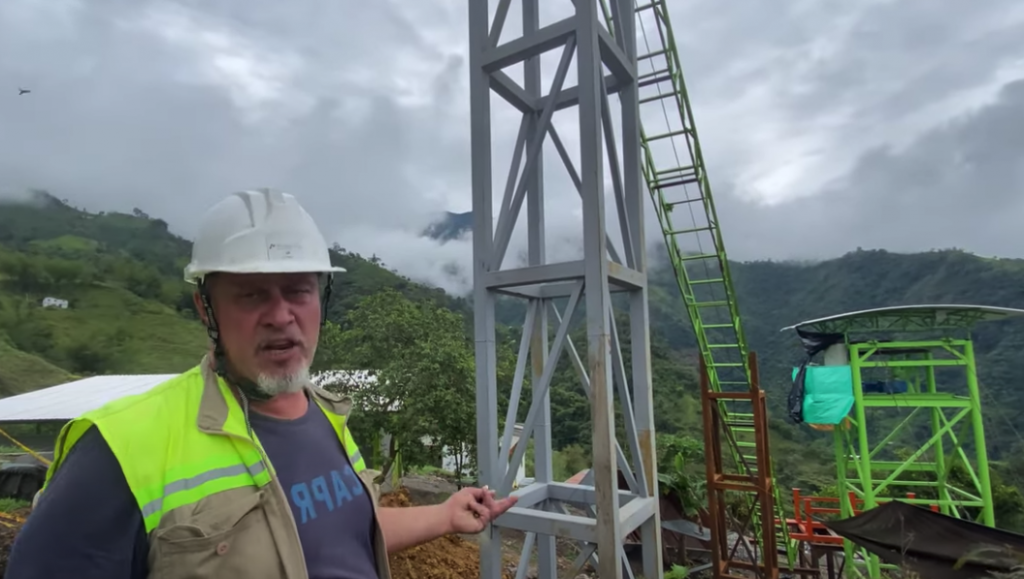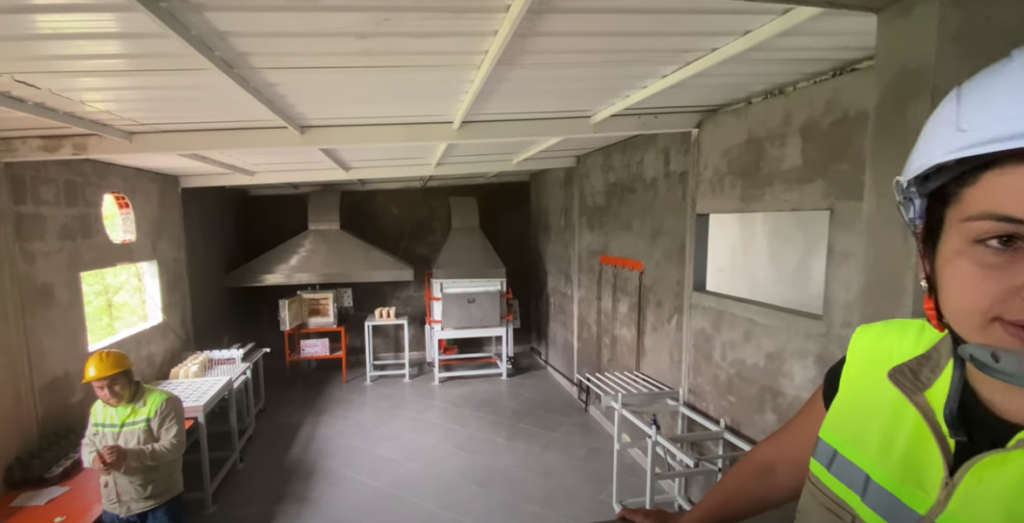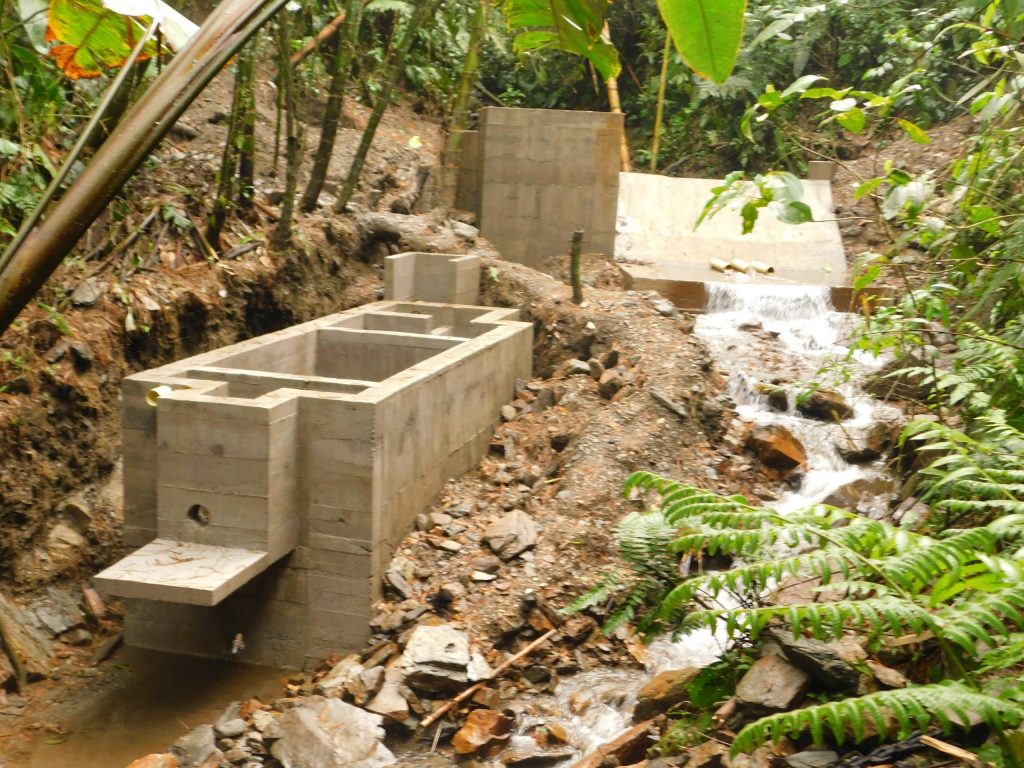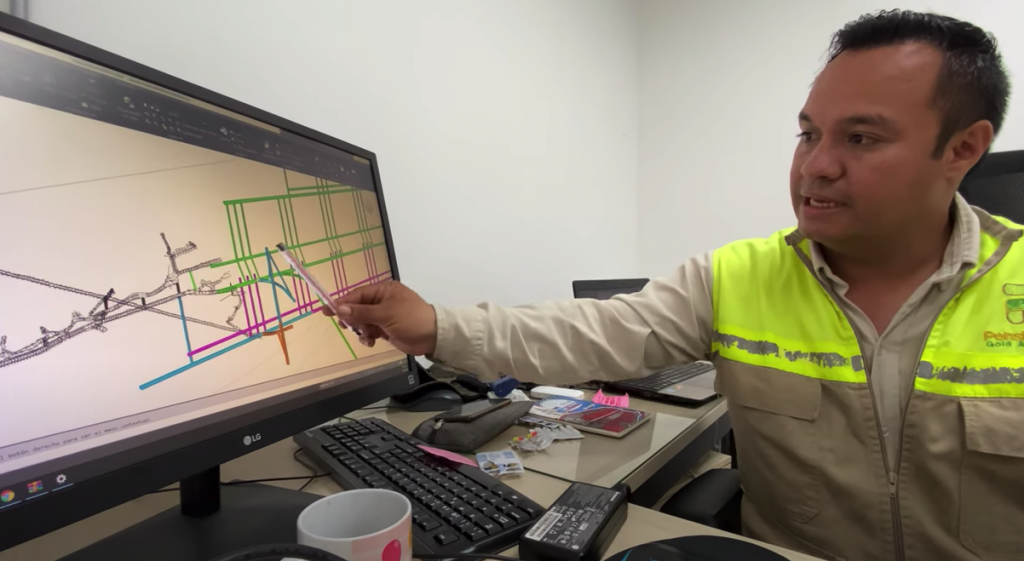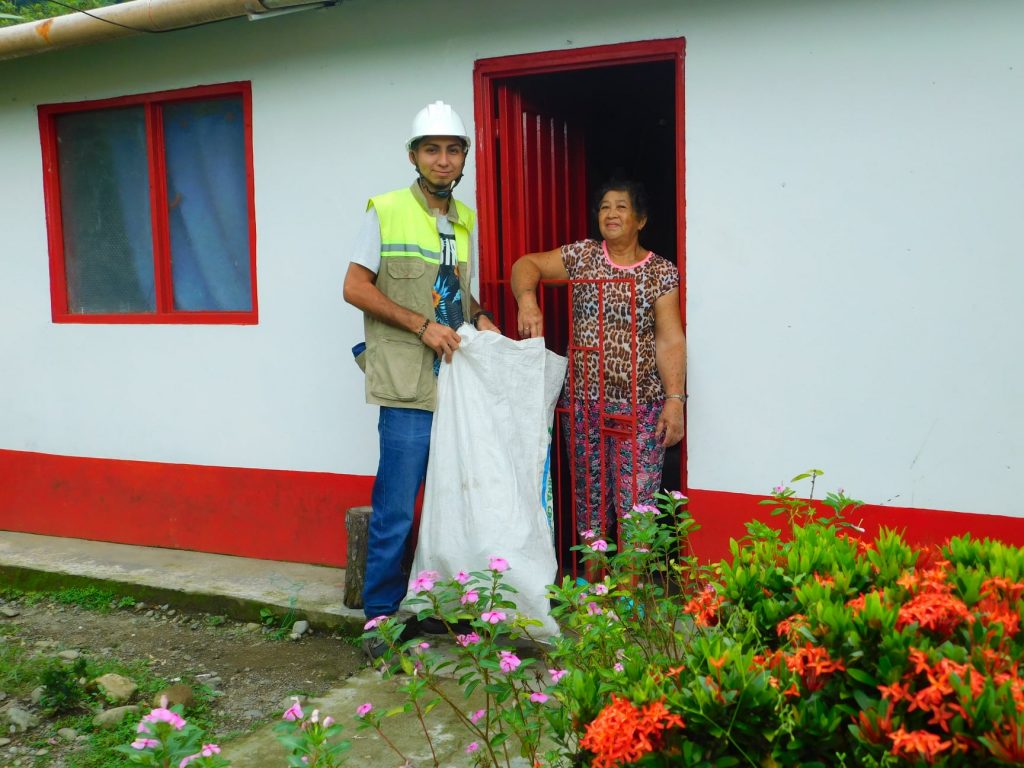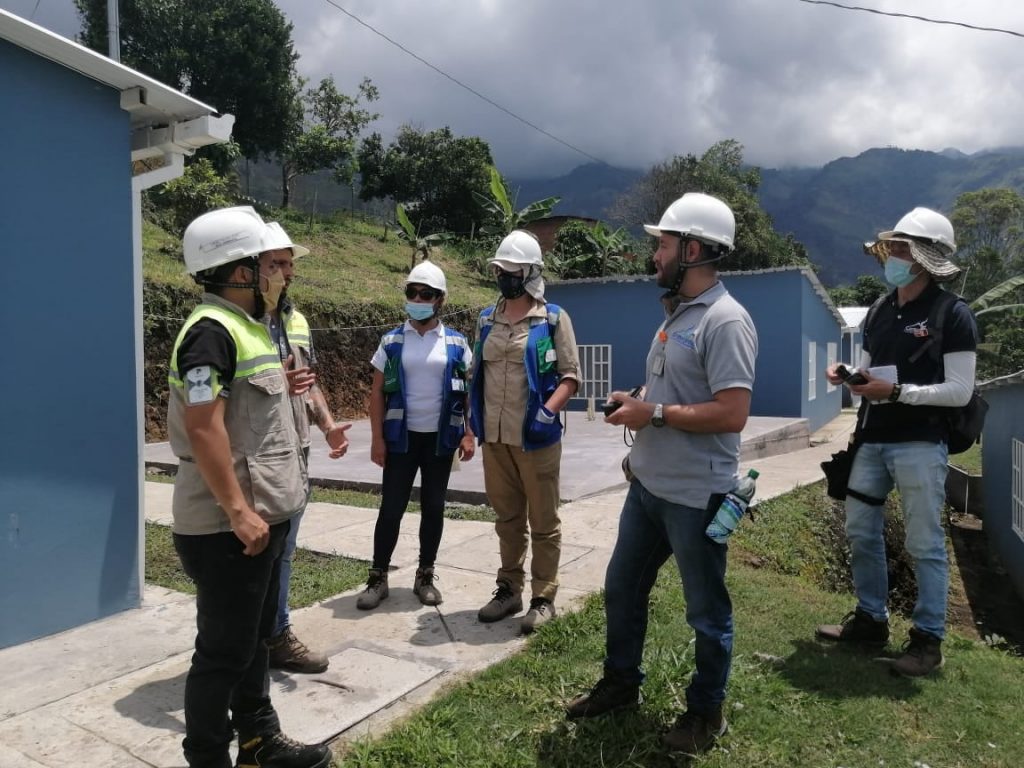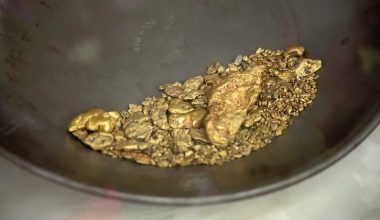The mining industry to which a mining project belongs is involved in the extraction of precious minerals and other geological materials. The extracted materials are transformed into a mineralised form that brings an economic benefit.
Typical activities in the mining industry include metal production, metal investment and metal trading.
Within the mining industry we find different mining projects, each with a different value proposition and management methodology.
Before launching a mining project there is a long way to go, the first thing that needs to be done is a technical report that requires a lot of research and involves putting the main points on the table that will guide the mining project.
Every mine that goes into production normally has a technical report written by geologists and engineers. This report is usually called “NI 43-101”.
The first page of the technical report will basically present the stages of the mine:
- PEA (Preliminary Economic Assessment)
- Pre-Feasibility Study
- Feasibility Study
- These points will be developed throughout the article on what is a mining project.
To value a mine or value investing in a mining project, you must carefully review the feasibility study, which is the most advanced stage of the mine, before construction and development of mining activities begins.
It is a more detailed report than the pre-feasibility study, with greater certainty that assumptions will be met.
Most of the feasibility study is a technical assessment but it is essentially a detailed business plan.
You should bear in mind that this study is an approximation and that as the project develops, the benefits of the mining project may be greater than expected as more veins are found or contain more ore than expected.
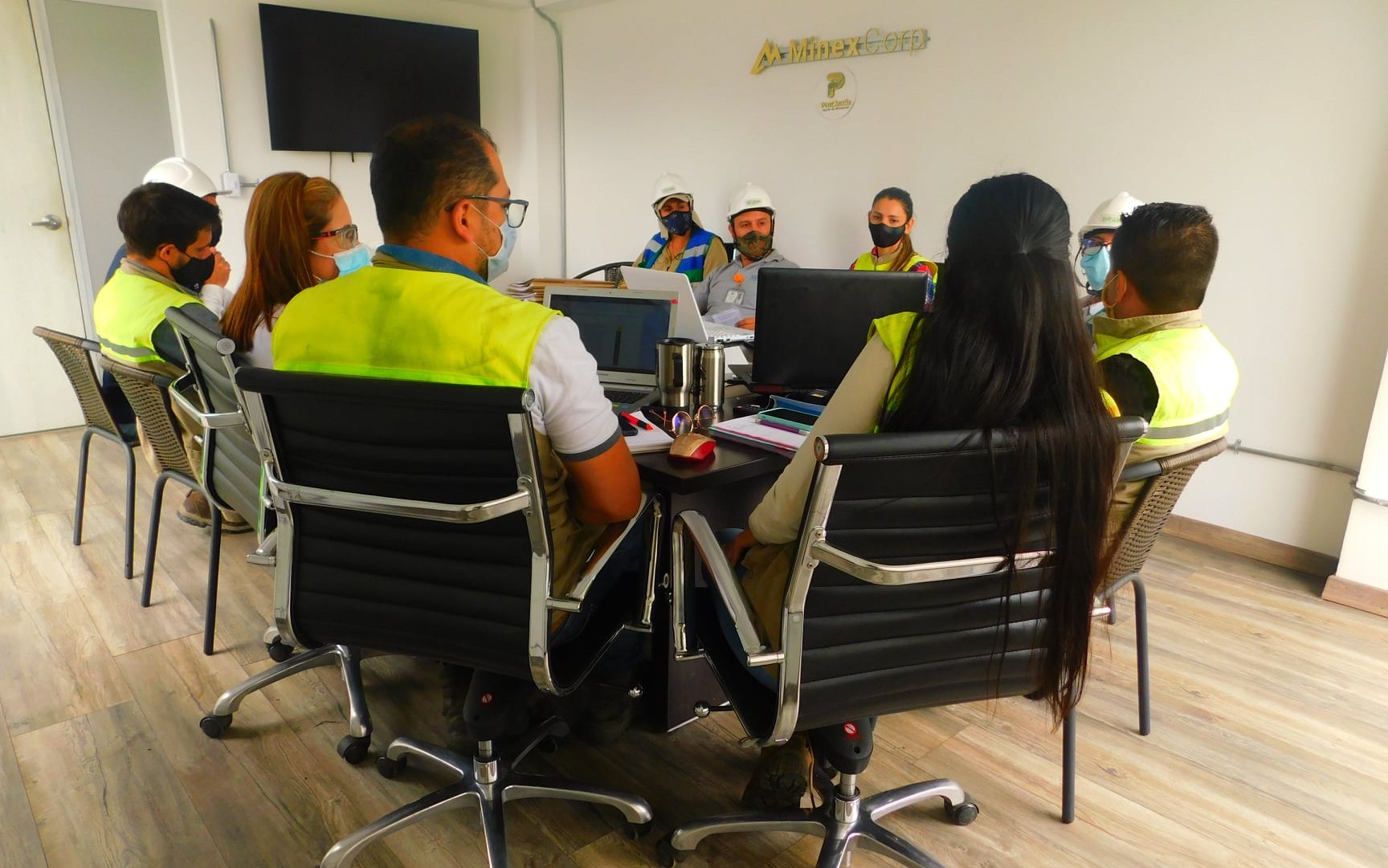
How to make a mining project
If you want to know how to develop a mining project, the first thing you should bear in mind are these two fundamental stages to be able to consider the feasibility of a mining project:
Exploration and feasibility
The purpose of exploration is to find minerals that are economically viable to extract. It begins with the location of mineral anomalies, after which discovery and sampling confirms or denies that there is a find. It can be further demonstrated through drilling programmes and resource definition.
Planning and construction
Once a potential mine is proven to be viable, the planning and construction phase begins with application and permitting, further economic studies and refinement of mine plans.
Infrastructure development also takes place at this stage, as mines are often located in remote areas requiring the construction of roads and electricity as is the case for our two mining projects Vereda Guayaquil and La Maria.
Life cycle of a mining project
Within the life cycle of a mining project are the following stages: exploration, discovery, development, production and reclamation. All stages of this Mining Cycle provide a direct economic stimulus.
Operating a mine, whether underground or open pit, is a large-scale project.
It is therefore not surprising that mining projects can take 10 to 15 years to start and can be subject to a number of important decisions.
In fact, operating a mine involves a number of steps, from discovery of the deposit to mine closure, so the life cycle of a mine is very long.
So if you are thinking of making a short-term investment, investing in a mining project is not an option for you.
These types of projects are not only long term, but also have a type of contract that can be inherited by your family, as the mine can be operated for many years.
Exploration stage
Exploration can take place in many forms, both by prospectors and exploration companies, and generally begins with research to select target areas. This is the first step in the life cycle of a mining project.
Once targets are selected, geological mapping, as well as many types of geochemical and geophysical surveys, can be carried out.
This type of activity, even in its simplest form, can lead to the discovery of the economic mineral deposits that society requires for much of the raw materials and manufactured products we use every day.
Discovery occurs when something of value is found. Discoveries rely on good field work, quality geoscience, investment and planning to bring them to the development stage.
Stage of development
New discoveries are crucial because our growing society consumes more and more manufactured products and our known mineral deposits are depleting. This is the second step in the life cycle of a mining project.
Very few discovered mineral deposits become producing mines. At this stage of the mining project, permits, leases and licences are required and the project may be sent for environmental assessment.
The mine development stage includes feasibility, geoscience and engineering studies. If all of these are favourable and all approvals are in place, the company decides whether to proceed with the project.
At this stage in the life cycle of a mining project, the company raises money to begin construction and develop a mine. This is the most expensive phase of the mining cycle.
Production or exploitation stage
Once the necessary money has been raised, investment in infrastructure, human capital, tools and everything else needed to operate the mine begins. This is the third step in the life cycle of a mining project.
Construction of a mine can typically take 2 to 3 years, requires a large workforce with diverse construction skills and can cost upwards of $1 billion.
In many cases, the mine that is acquired has many of the facilities but in many other cases everything has to be built from scratch, as there are many mines with old or dilapidated infrastructure.
The production phase includes the extraction, milling and processing of raw materials, such as coal, precious metals, industrial minerals and aggregates, depending on the type of mine to be exploited.
Rock is first mined and removed from the ground, then crushed, sometimes ground to a fine flour size, and then subjected to chemical or non-chemical processes to separate the valuable minerals from the waste minerals.
The latter are permanently stored at the mine site, while the valuable minerals are sold on the market, in our case these materials will be sold through an ecommerce where you will only be able to purchase them with your MINX.
Mining production can support tens to hundreds or thousands of jobs and can last from a few years to many decades. Some mines have even exceeded 100 years and, as a result, provide opportunities and benefits for several generations as mentioned above.
The length of time a mine is in production depends on the quantity and quality of ore or metal in the deposit and the profitability of the operation.
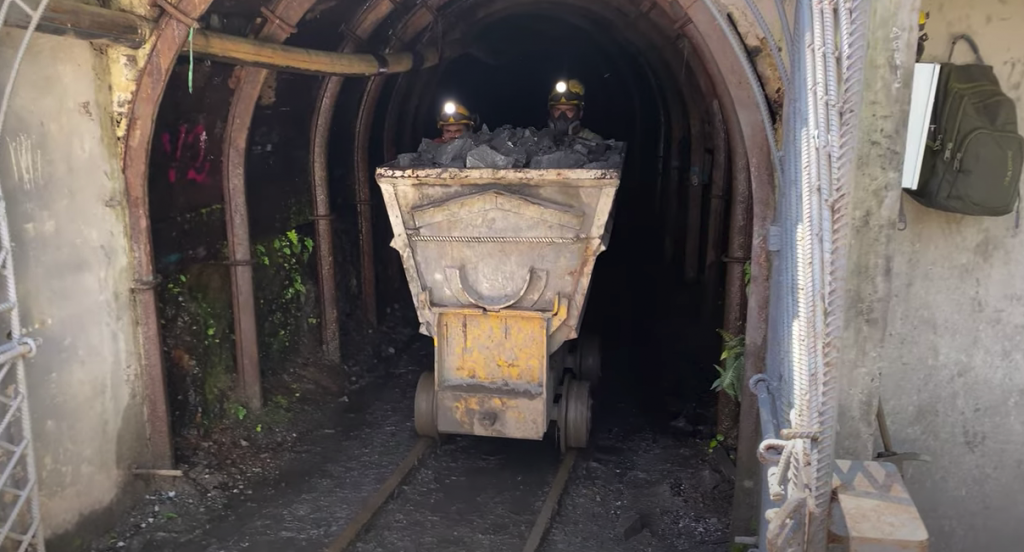
Recovery phase
Mine site reclamation and environmental protection starts at the beginning of a project and continues after closure. This is the last step in the life cycle of a mining project.
Mines must have closure and reclamation plans and must post a bond for the estimated cost of reclamation.
The reclamation plan and bond amount must be approved by the local Department of Natural Resources and Department of Environment.
In many cases, mine site reclamation can add significant value to land in communities for recreational purposes and future development.
Progressive reclamation is recommended throughout the life of the mine as we do at our mining projects, where we have a very strong environmental policy.
Environmental impact assessment of a mining project
The interest in the conservation of natural resources is one of the elements that characterise modern societies, which consider the need to establish sustainable development that makes the conservation of the biosphere compatible with its necessary use by the human species.
Human beings have always interacted to a greater or lesser extent with the environment; however, in recent times, the great growth of the world population and the consequent increase in the need for food and resources have generated significant damage to the environment, such as the depletion of non-renewable resources.
The depletion of natural resources due to uncontrolled exploitation, the disappearance, sometimes irreversible, of a large number of species of flora and fauna, and the degradation of natural spaces by human action, have caused widespread concern in society.
Due to this concern, it is essential that any mining project in the 21st century has an environmental impact study and environmental policies that ensure that it has the minimum impact on the environment where it is developed.
The objective of environmental impact studies in mining is to identify, predict, evaluate and prevent the environmental alterations produced by extractive activities, from research and mining exploitation to the processing of the substances to be benefited.
Feasibility study of a mining project
Now that you know the stages of a mining project and the time it takes to set one up, we are going to explain how to assess the feasibility of a mining project or the feasibility study of a mining project so that you can invest in it.
The feasibility study is part of the approval stages of a mining project. Before this are: the profile engineering and the pre-feasibility study. The feasibility study is followed by three more stages: detailed engineering, execution and operation.
The feasibility study is an analysis in which the possibilities of success or failure of the project are measured in order to decide whether or not to proceed with the project. This is also where the economic feasibility of the project is determined.
Scoping studies
A scoping study can be carried out very early in the exploration phase, as a basis for acquiring exploration areas or for committing to financing exploration.
At this stage, the investment risk may be relatively small, but it is obviously undesirable to spend more funds on something that has no chance of being economic.
The greatest risk at this stage is that a viable mining project will be abandoned due to inadequate evaluation. As there is a very low probability that an exploration project will become a mine, it is clear that this risk is
quite serious at the Scoping Study stage. For this reason, it is essential that experienced people are involved in the Scoping Study. The accuracy of the predicted estimate is usually 30-35 per cent, although some companies accept +/- 50 per cent.
It is acceptable for scoping studies to be based on very limited information or speculative assumptions in the absence of hard data. The study is directed at the potential of the property rather than a conservative view based on limited information.

Pre-feasibility studies
There are common reasons for conducting pre-feasibility studies within the feasibility study of a mining project:
- As a basis for committing to a major exploration programme following a successful preliminary programme.
- Commitments of tens of millions of dollars or more for ongoing exploration and development may be made on the basis of a pre-feasibility study, prior to the decision to mine. For example, where ore reserves cannot be proven by surface drilling, underground development may be required for exploration at an early stage of the project.
- To attract a buyer to the project or to attract a joint venture partner or as a basis for a major underwriting to raise the required risk capital. Potential buyers may also prepare a pre-feasibility study in whole or in part as part of the due diligence process.
- Provide a justification for proceeding to a final feasibility study.
- The results of a pre-feasibility study may be the first solid project information that corporate decision-makers and investors see.
The findings are usually announced publicly, making it difficult to change perceptions with subsequent information.
In such cases, the Pre-Feasibility Study has become the real decision point, with the subsequent Feasibility Study seen by management and investors as a necessary step on a path that has already been irrevocably committed.
While undesirable, this sequence of events can occur due to modern reporting requirements.
For these reasons, the Prefeasibility Study should be prepared with great care by experienced persons, and its conclusions should be highly qualified where necessary.
Assumptions should be realistic rather than optimistic because it is very difficult for management and the markets to come back to reality in the event that the final Feasibility Study is significantly less favourable.
Final feasibility studies
The Final Feasibility Study is generally based on the most attractive alternative for the project as previously determined. The objective of the study is to eliminate all significant uncertainties and present the relevant information with supporting material in a concise and accessible manner. The final feasibility study has several key objectives:
To demonstrate with reasonable confidence that the project can be constructed and operated in a technically sound and economically viable manner.
The term “bankable” is sometimes used in connection with final feasibility studies. This only means that the study reaches a quality and standard that would be acceptable for submission to bankers.
Whether the project design has been optimised in the feasibility study will depend on the time and budget allowed.
The feasibility study is only one step on the design path. Much more work needs to be done during the detailed engineering phase that follows project approval.
Engineering work is generally ongoing through project completion, commissioning and early production.
Conclusion on a mining project
Now you have all the information about what a mining project is, how long it lasts, what it is worth and what you should know before investing in one.
It is important that you inform yourself, that you talk to people who have invested and make a balance of pros and cons, but above all you must take into account that it is a long-term project, which involves many costs and a lot of human capital to manage.
We recommend that you visit our website, MinexCorp and Pensilvania Gold & Mineral, which are the three companies in charge of the Vereda Guayaquil and La Maria mining projects in Colombia, to find all the information you need.
You can also write to us for more details.
